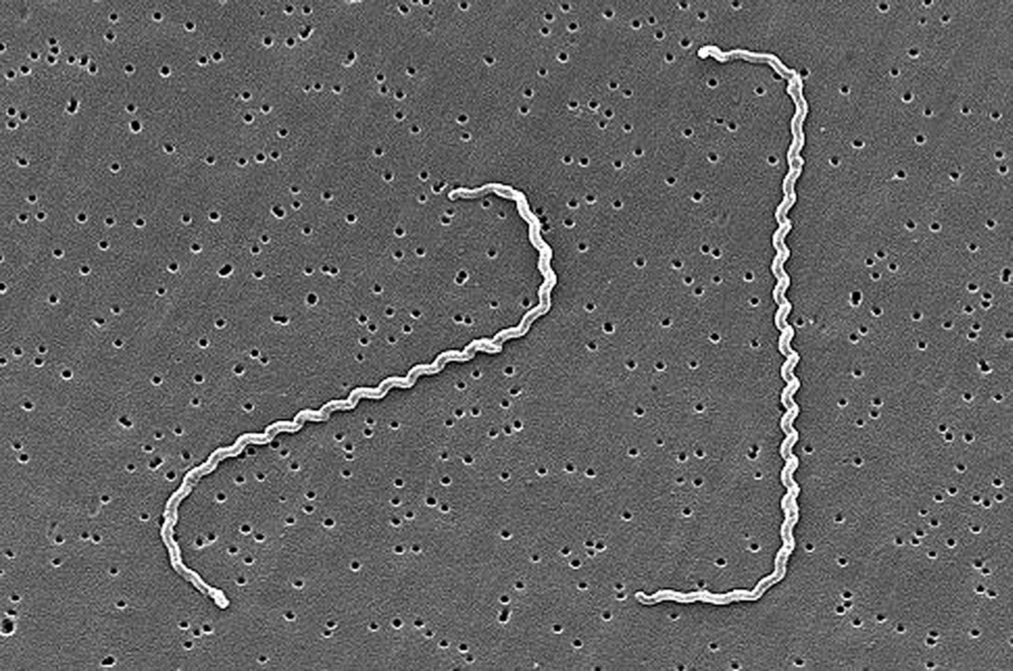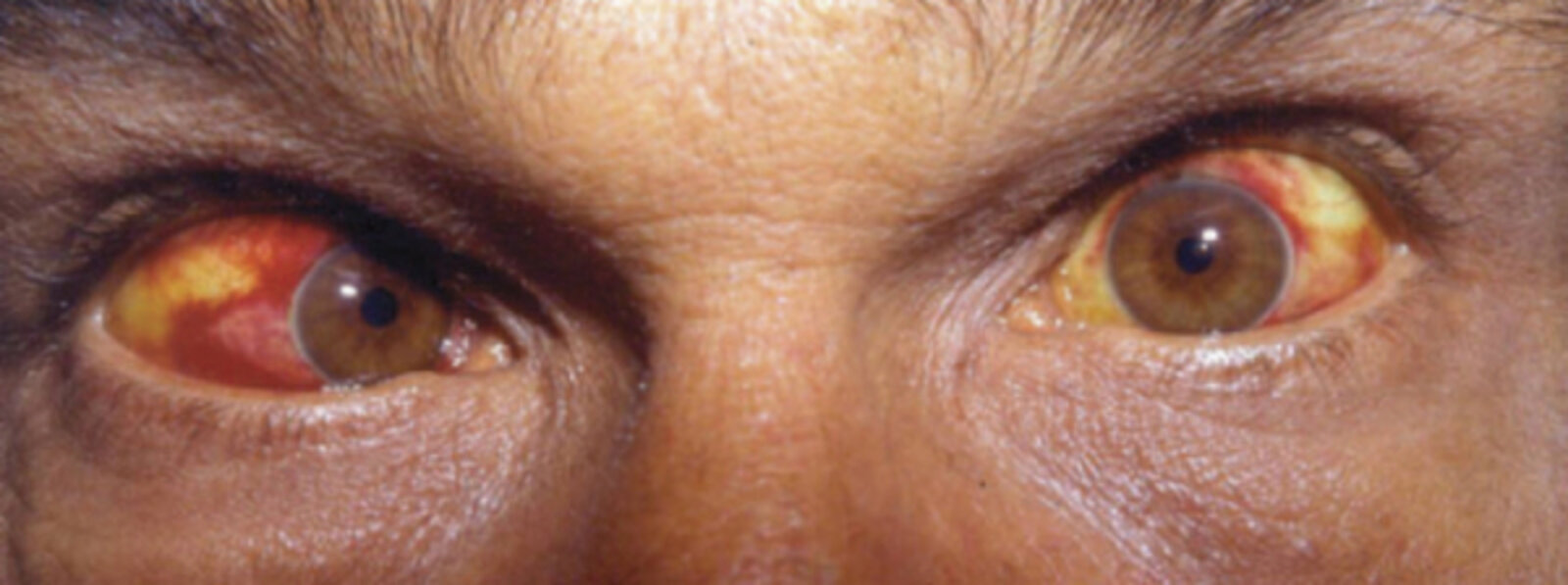Epidemiology
Most commonly found in tropical climates
Etiology
- Pathogen: Leptospira (especially L. interrogans sensu lato), a genus of gram-negative spirochete with hook-shaped ends

- Spirochetes cannot be visualized using Gram staining and require specialized staining methods.
- Transmission
- Sources
- Urine, blood, or tissue of an infected animal (most commonly rats)
- Environmental contamination (e.g., water contaminated with urine of infected animals)
- Entry points: broken skin or exposed mucous membranes (e.g., conjunctiva, oral mucosa)
- Risk factors
- Occupations that involve direct or indirect contact with animals (e.g., agricultural or sewage workers)
- Freshwater recreational activities (e.g., canoeing, swimming, windsurfing)
- Sources
Tip
钩端螺旋体病分型(肺肾脑流黄)
- 流感伤寒型
- 肺出血型,死亡率最高
- 黄疸出血型,最常见
- 肾衰型
- 脑膜炎型
Pathophysiology
Clinical features
- Biphasic illness is characteristic.
- Phase 1: Septicemic/Acute Phase (1 week)
- Abrupt onset of flu-like symptoms: high fever, chills, severe myalgias (classically in calves and lumbar area), headache.
- Conjunctival suffusion (redness without exudate) is a key finding.

- Photophobia, nausea, vomiting, diarrhea may occur.
- Phase 2: Immune Phase
- Recurrence of fever after a brief remission.
- May lead to aseptic meningitis.
- Weil’s Disease (Severe Icteric Leptospirosis)
- Severe form in ~10% of cases.
- Triad of jaundice (hepatic dysfunction), renal failure (azotemia), and hemorrhage (thrombocytopenia).
- Can progress to multi-organ failure, ARDS (pulmonary hemorrhage), and shock.